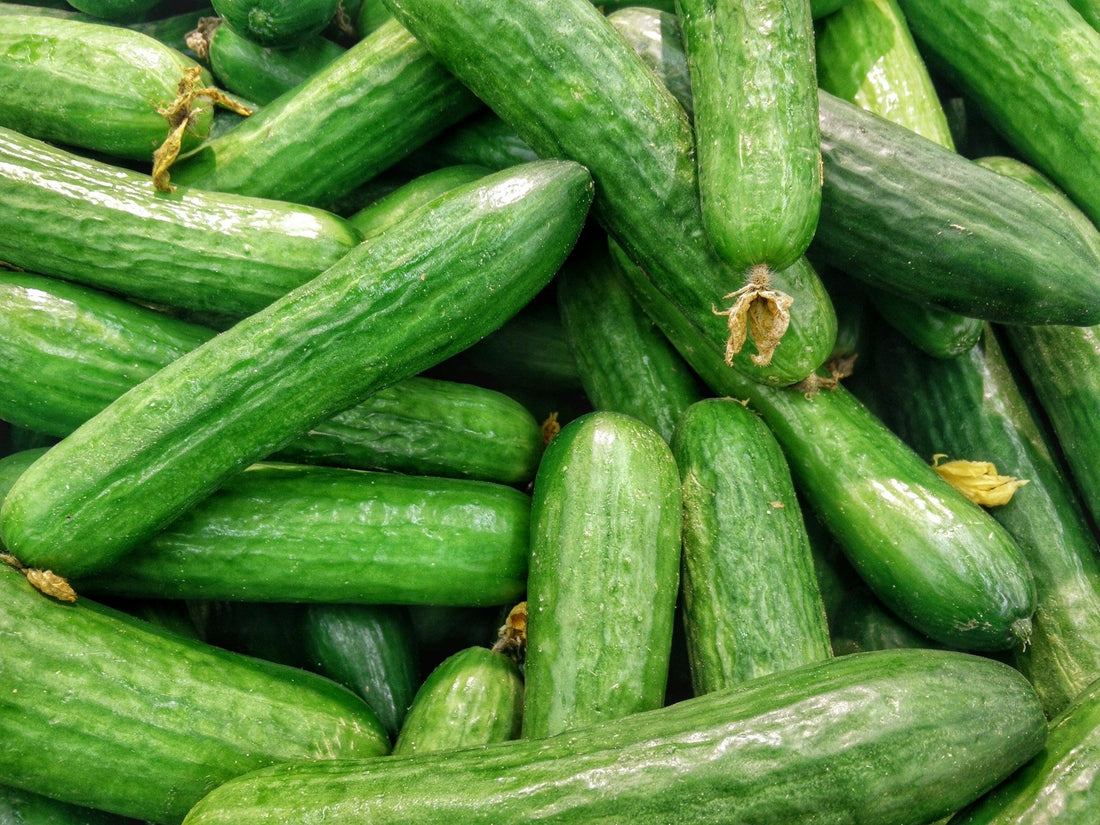The cucumber growing season in Australia depends on your location and the temperature.
You should plant cucumbers between September and January in temperate climates, between July and March in the subtropics and October and December in cold climates.sed products, discerning gardeners are increasingly looking for natural-based, chemical-free solutions for weed control.
CHOOSING THE BEST CUCUMBERS TO GROW
Growing cucumbers starts with choosing which varieties to grow. Cucumbers may be smooth-skinned or with ridges and bumps – the exterior appearance has no bearing on flavour or vigour.
THERE ARE THREE MAIN VARIETIES OF CUCUMBER GROWN IN AUSTRALIA:
Lebanese – the most popular; generally smooth skinned and seedless
Continental – the longest type with fruit up to 40 cm in length
Apple – rounded, usually white skinned although there are some green varieties and very crunchy – Bronwyn’s favourite and quite easy to grow
What you'll need to start growing cucumbers
To begin your cucumber-growing journey, you will need:
- 9 cm pots for sowing seeds.
- Seed raising potting mix sprayed with Earthfood.
- Spade.
- Hay for soil cover.
‘The microbes make microscopic holes in the soil which hold condensation and watering which means that watering is less – in fact, saving up to 70% of water usage. Some farmers with Earthfood, west of Gympie in Queensland, will water 1 cup every 2 metres, every 2 weeks in dry areas.’
– Bronwyn Holm
Start your cucumbers off by sowing the seeds in pots. They can be also sown directly into the soil as soon as the soil is warm enough in cool and temperate regions and at the end of the hot, dry season in the tropics. To get the optimum growth they need good soil and a sunny spot with protection from strong winds.
Cucumbers that have been sown into individual pots can be planted out into the garden when they are sturdy enough to be handled and when soil and weather conditions are conducive to good growth. You want to be sure the temperature won’t drop below 12-15°C and choose a warm, sunny, sheltered spot.
Harden the seedlings off for a week first by placing them outside in their pots during the day and giving them some protection at night.
Before planting out cucumbers, prepare the soil by spraying Earthfood over it and covering it with hay.
Plant seedlings 90cm apart and water well. You don’t need to provide support for them unless you are trying to save space – they will grow happily sprawling across the ground. Although In the Earthfood Backyard we use a support to plant marigold near them for colour with the bees. They do need pollination so keep your flowers near and bees happy.
Powdery mildew, cucumber mosaic virus and wilting cucumbers are once again because the microbes are not functioning as well as they should, or even the soil being completely depleted of living microbes? This is where Earthfood is able to supply the soil with what it requires to grow healthy pest and disease-resistant plants.
‘Earthfood is bee kind, reef safe, frog friendly, pet and child friendly. Cleans up soils from toxic compost tea, aerates the soil heavy laden with worm juice mixtures and other tonifiers like Seasol and organic NPK as an artificial stimulant for plants which makes them look great, – pretty. But there is GUTS to the stalk or leaves – it is the live microbes that the symbiotice relationship with the roots and restructures the soil and roots and that includes unlocking the nutrients in the soil as Mother Nature provides naturally. They will come up to collect nitrogen from the air we breathe which is 78% nitrogen and fixate it in the soil for the roots – naturally better.’
– Bronwyn Holm

